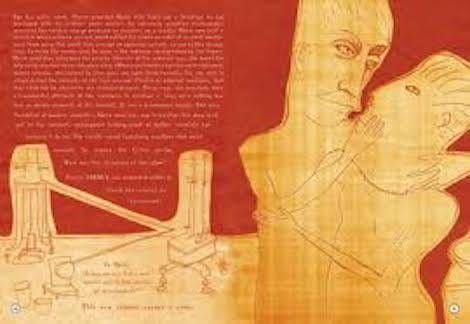Exploring the Complex Legacy of Marie Curie in Literature
Written on
Chapter 1: The Unconventional Portrayal of Marie Curie
In the latest entry of the “Around the World in Books” series, which reviews 30 books from 30 different nations throughout March, we turn our attention to the groundbreaking work that presents Marie Curie in an unexpected light. The book in question is Radioactive: Marie & Pierre Curie: A Tale of Love & Fallout (HarperCollins, 2010) by Lauren Redniss.
This unique narrative takes a bold approach by showcasing Marie Curie not just as a scientist, but also in intimate and revealing imagery. Redniss departs from traditional graphic novel formats, opting instead for evocative black-and-white, two-toned, and multicolored spreads that encapsulate the couple's scientific passion as well as their romantic connection.
The significance of the Curies' scientific contributions is evident throughout the text. Redniss clearly illustrates how radioactivity has influenced many critical modern events, from the partial meltdowns at Three Mile Island to the radiation treatments that saved the life of a young boy battling non-Hodgkin lymphoma in Rhode Island.
However, the book includes a number of illustrations that sexualize Marie, presenting her in various states of undress. One particularly striking image shows her playfully interacting with Paul Langevin, a married man who became her lover after the passing of her husband. The accompanying text is arranged in a creative format that mimics the shape of Langevin's head.

Redniss employs a combination of detailed drawings and cyanotype printing, a technique that lends a bluish tint and an otherworldly quality to her images, reminiscent of radium's ethereal nature. Her artistic style is characterized by Modigliani-inspired elongated features and almond-shaped eyes, grounded by archival materials such as maps, photographs, and even a North Korean stamp commemorating the 50th anniversary of Curie’s death.
While the various artistic influences enrich the narrative, they sometimes overshadow the text itself, which was a finalist for the National Book Award in nonfiction and has since been adapted into a 2019 Amazon Original film. Redniss’s writing style often relies heavily on block quotations from interviews and other sources, creating instances where a more nuanced paraphrase would have been beneficial. Additionally, her tendency to abruptly shift from the Curies’ lives to later historical events can be disorienting.
Despite her artistic prowess surpassing her writing skills, Redniss possesses a keen eye for literary detail that yields memorable lines, such as the observation made at the Bibliothèque National: “the Curies’ laboratory notebooks are still radioactive, setting Geiger counters clicking 100 years on.”
The question remains: Is the sexualization of Marie Curie problematic? Perhaps not. The depictions are tastefully done, and the book is aimed at an adult audience. Exploring the romantic dimensions of her life can be seen as a valid artistic interpretation. Nevertheless, it raises concerns about how such portrayals would be received if applied to male scientists of equal stature. For instance, while Albert Einstein's personal life included affairs and illegitimacies, it’s hard to envision a similar biography depicting him in a comparable light.
This duality of perspective invites contemplation. On one hand, Radioactive can be viewed as an acknowledgment that female Nobel laureates have complex lives beyond their scientific accomplishments. Conversely, it might be perceived as a regressive portrayal that emphasizes women’s identities through their sexuality and relationships with men. Ultimately, it prompts reflection on how such sexualization might resonate with Curie, who famously stated, “There is no connection between my scientific work and the facts of private life.”
Janice Harayda is an award-winning critic whose writing has been featured in numerous national publications. She previously served as vice president of the National Book Critics Circle and has been recognized on Medium as a Top Writer in various categories, including Books and Feminism.
You may also find interest in this “Around the World in Books” review of a novel by a pioneering Hungarian author:
A Gem From ‘Hungary’s Jane Austen’
This gripping World War II novel features a determined heroine who is sent to a strict girls’ school under mysterious circumstances...